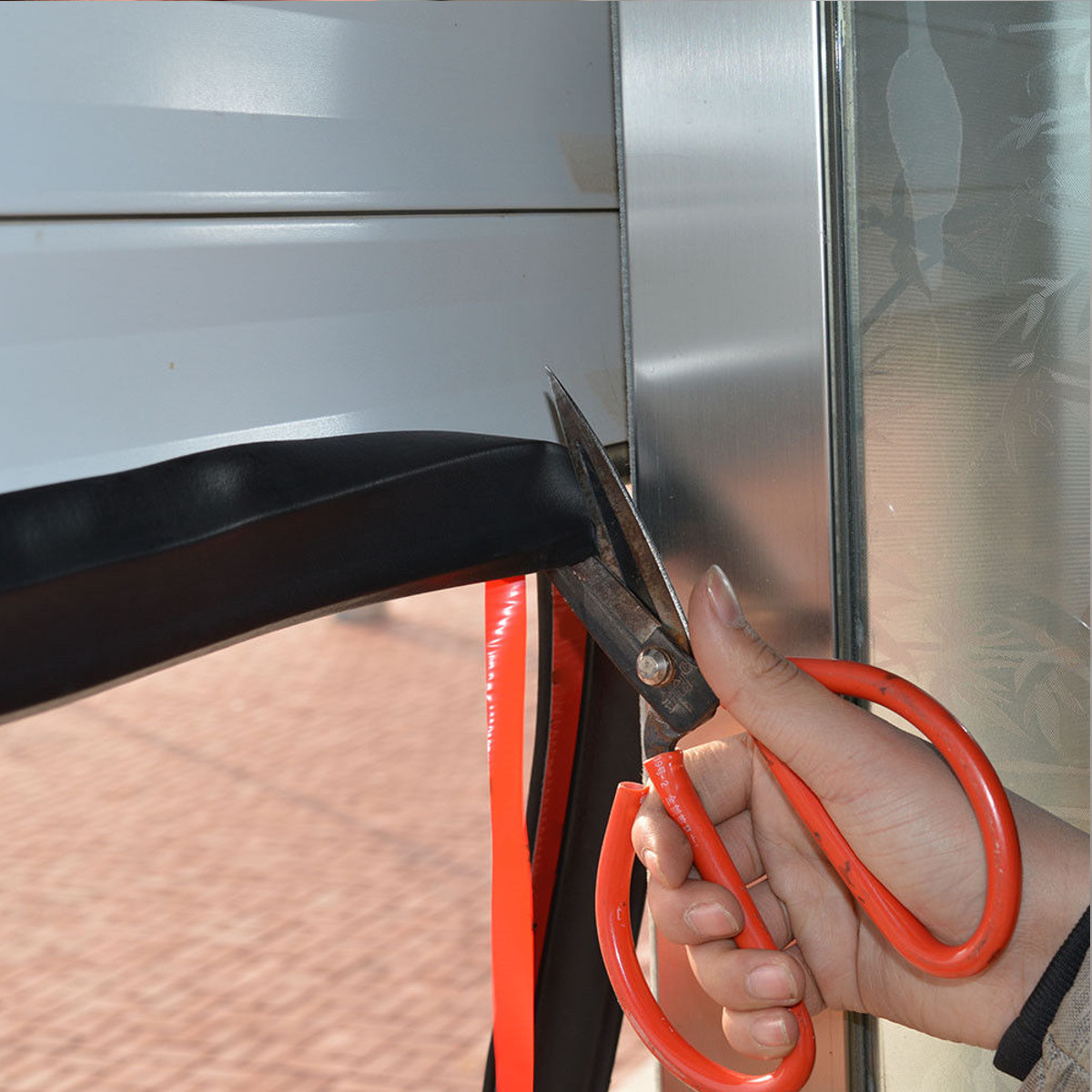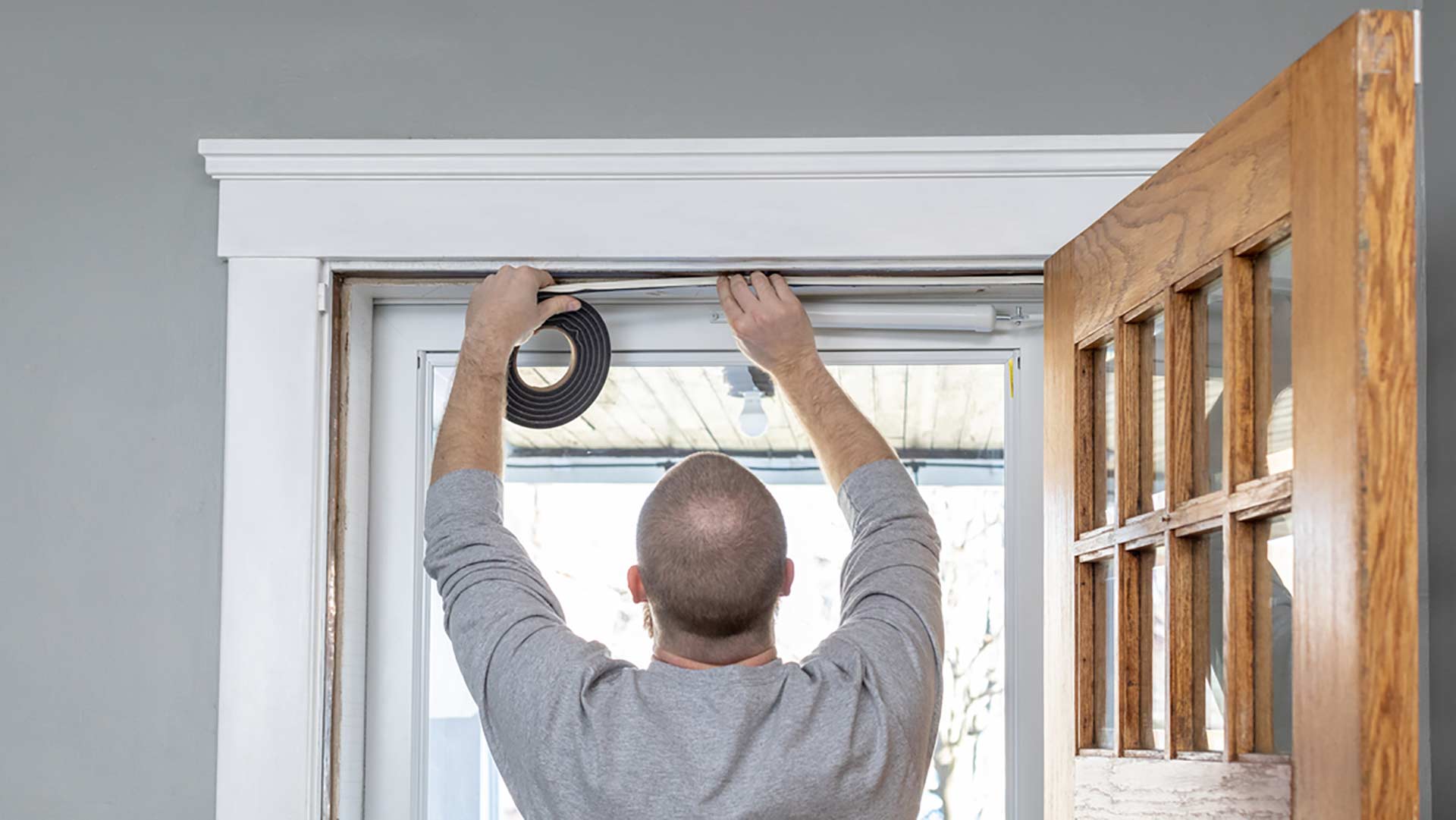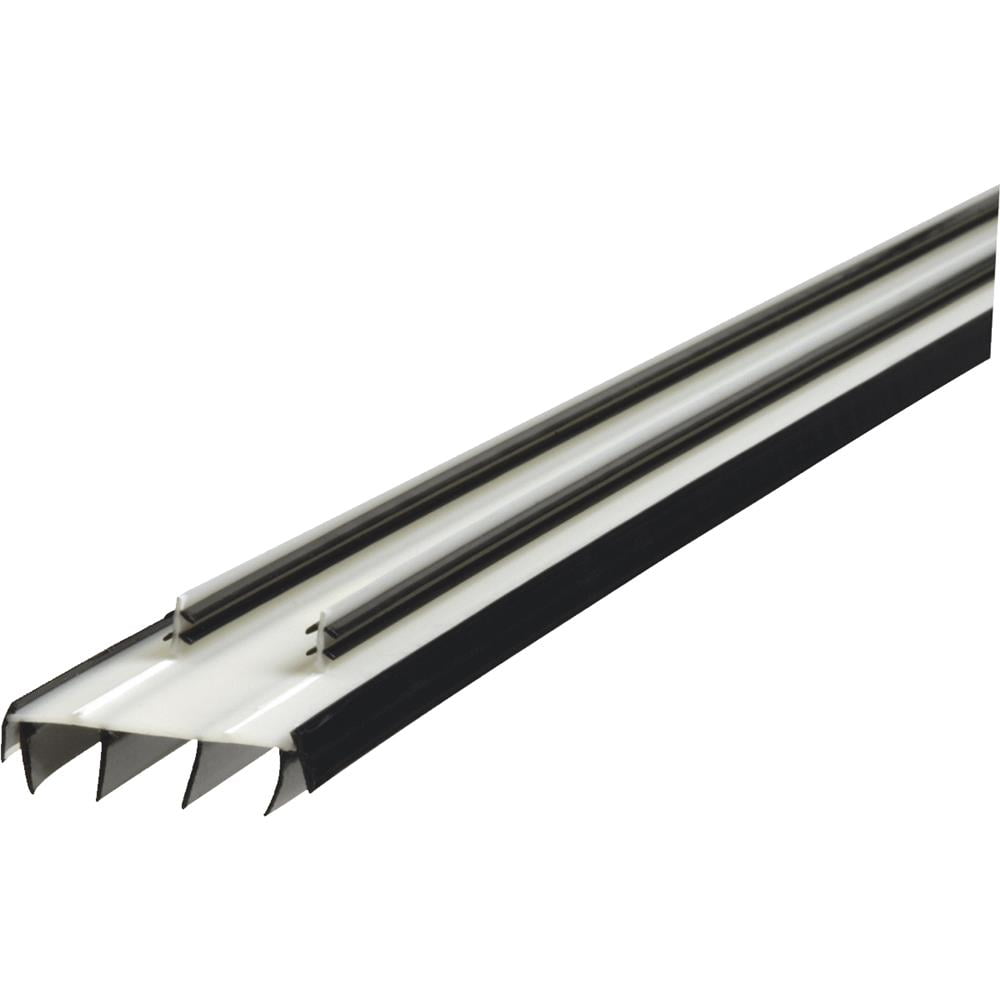
- #REPLACING WEATHER STRIPPING ON BOTTOM OF DOOR INSTALL#
- #REPLACING WEATHER STRIPPING ON BOTTOM OF DOOR WINDOWS#
Tack the strip along this edge, nailing every 3″. Now open the bottom sash all the way and insert one end of a strip into the sash channel, between the window frame and the lower sash, with the nailing edge snugly along the inside edge of the sash channel. Measure the sash channel from its bottom to the top of the lower rail of the upper sash, and cut two strips this length, using tinsnips.
#REPLACING WEATHER STRIPPING ON BOTTOM OF DOOR INSTALL#
To install spring-metal strips on double-hung windows, leave the upper sash fully closed, and open the bottom sash halfway. If screws are installed, the stop will be adjustable. mark the jamb with the width of stop-and-seal, measuring back from door and 3. Close the door tightly against the bolt 2. Install it as you would a standard door stop, mitering at corners and scribing at the threshold according to the existing trim. Select a product of sufficient size and resilience to create an effective seal. Wood versions look best on old houses, and may be purchased as stock units, or custom made using kerf-in seals.


Stop-and-seal combinations are lengths of metal or wood moulding fitted with a weather strip, which attach to a door jamb in place (or on top) of the existing stop moulding. If the weather strip needs to be pulled out, run a dull screwdriver tip or a 5-in-1 tool along the crease in the metal. At bottom corners, secure a piece of felt to seal between the weather stripping and the threshold. For the header, cut a slight bevel on the ends so it doesn’t interfere with the two pieces it meets in the corners. If there’s space between the lock boxes, cut a third strip in this fashion on both ends. Do the same from the bottom of the lock to the threshold. Cut a notch to create a tab that fits under the lock strip, and trim the nail edge at 45 degrees to get rid of the sharp point. Cut a piece to reach from the header to just past the screw of the deadbolt keep. Use three or four nails to anchor the strip to the stop. Next, tack the strip to the jamb until all nails are 1 1/2″ apart, and drive the nails flush with a nailset.įor the opposite jamb, install the lock strip so it extends 3/4″ past the top and bottom of the lock strikes. Keeping the strip absolutely straight, drive a nail near the top, middle, and bottom hinges. Leave a 1/ 16” space below the doorway header at the top. Start with the hinge side and center the material on the jamb, flange to the outside. When nailing the weather strip, avoid wrinkles, which will let in the elements.

For the length, measure from the threshold to the upper corner where the jamb meets the head. Install spring bronze with the nailing edge facing away from the door stop with V-strip, the nailing strip runs next to the stop. Metal weather strips are attached to the jamb with copper weather-stripping nails. Some dimensions are not available at everyday hardware outlets. Try to match the door’s dimensions when you buy-e.g., 1 1/4″ width for 1 3/4″ exterior doors. Before you install, read the recommendations and instructions from the manufacturer of the type you choose. Weather strips alone can’t address cracks more than 1/ 8” wide. Nail-on foam and felt types will work on double-hung windows, but since the strips must be applied where sash and trim meet, they are obvious.īefore installing weather stripping, repair any door, window, or trim defects. It can be installed without removing the sash, and it’s hidden when the window is closed.

Spring bronze is still one of the best for retrofitting double-hung sash windows.
#REPLACING WEATHER STRIPPING ON BOTTOM OF DOOR WINDOWS#
Windows may be weather-stripped with many of the same products used for doors. However, weather strips that combine a seal (often a rubber bulb or foam gasket) and a wood stop moulding work well for old houses, as they marry modern technology and traditional millwork.


 0 kommentar(er)
0 kommentar(er)
